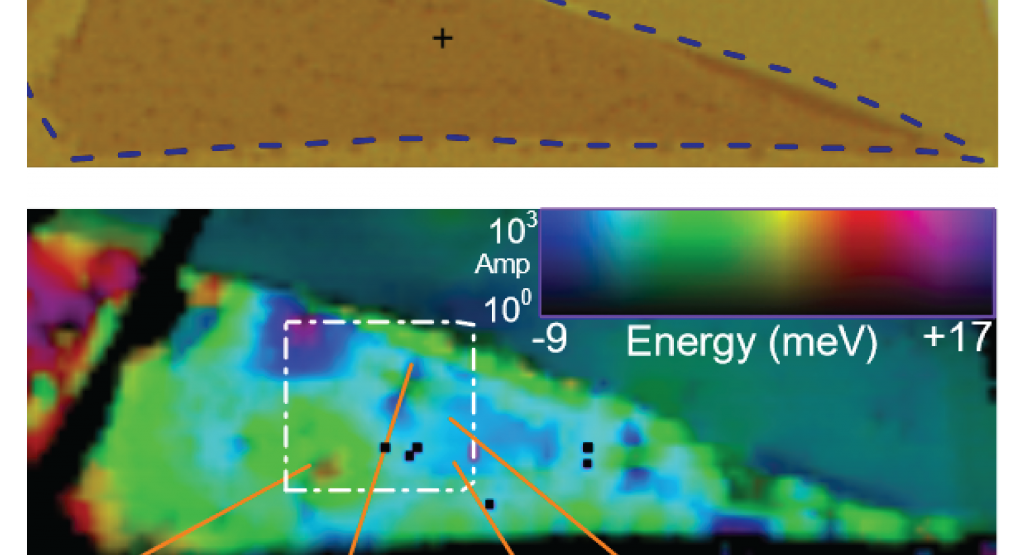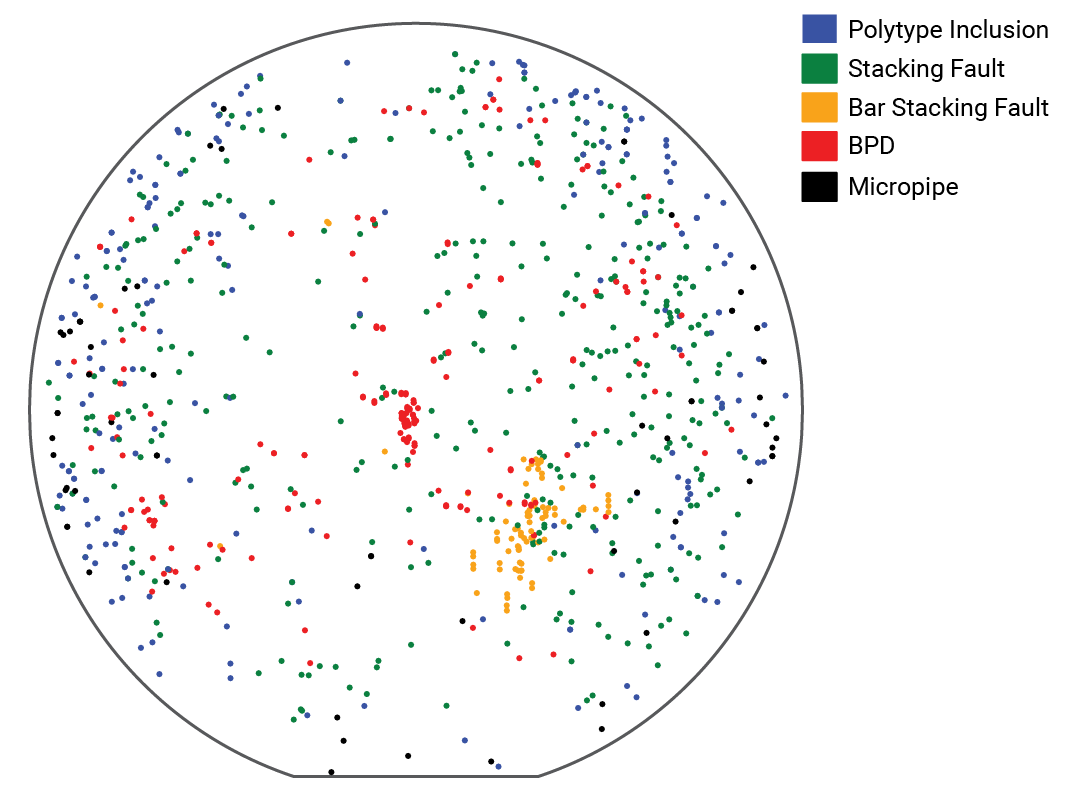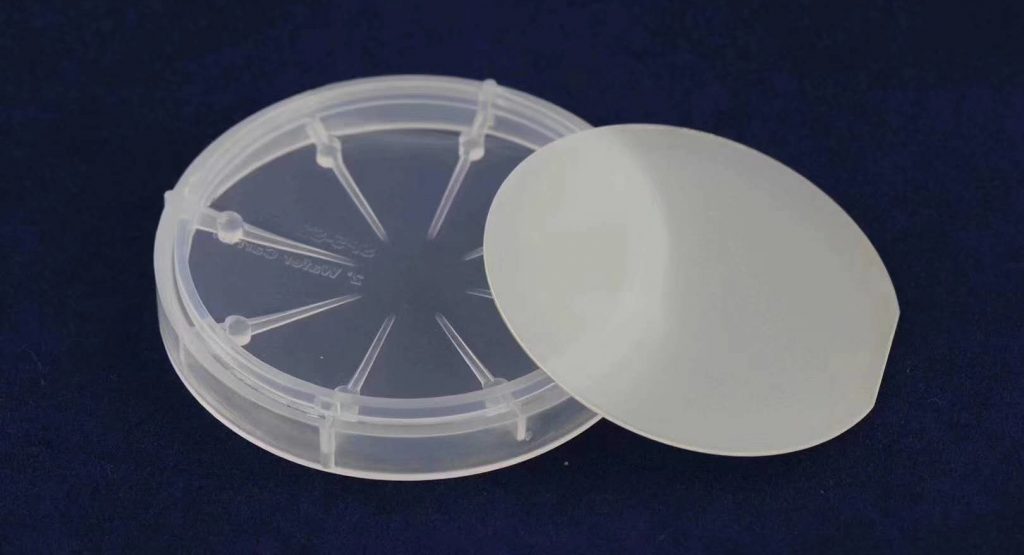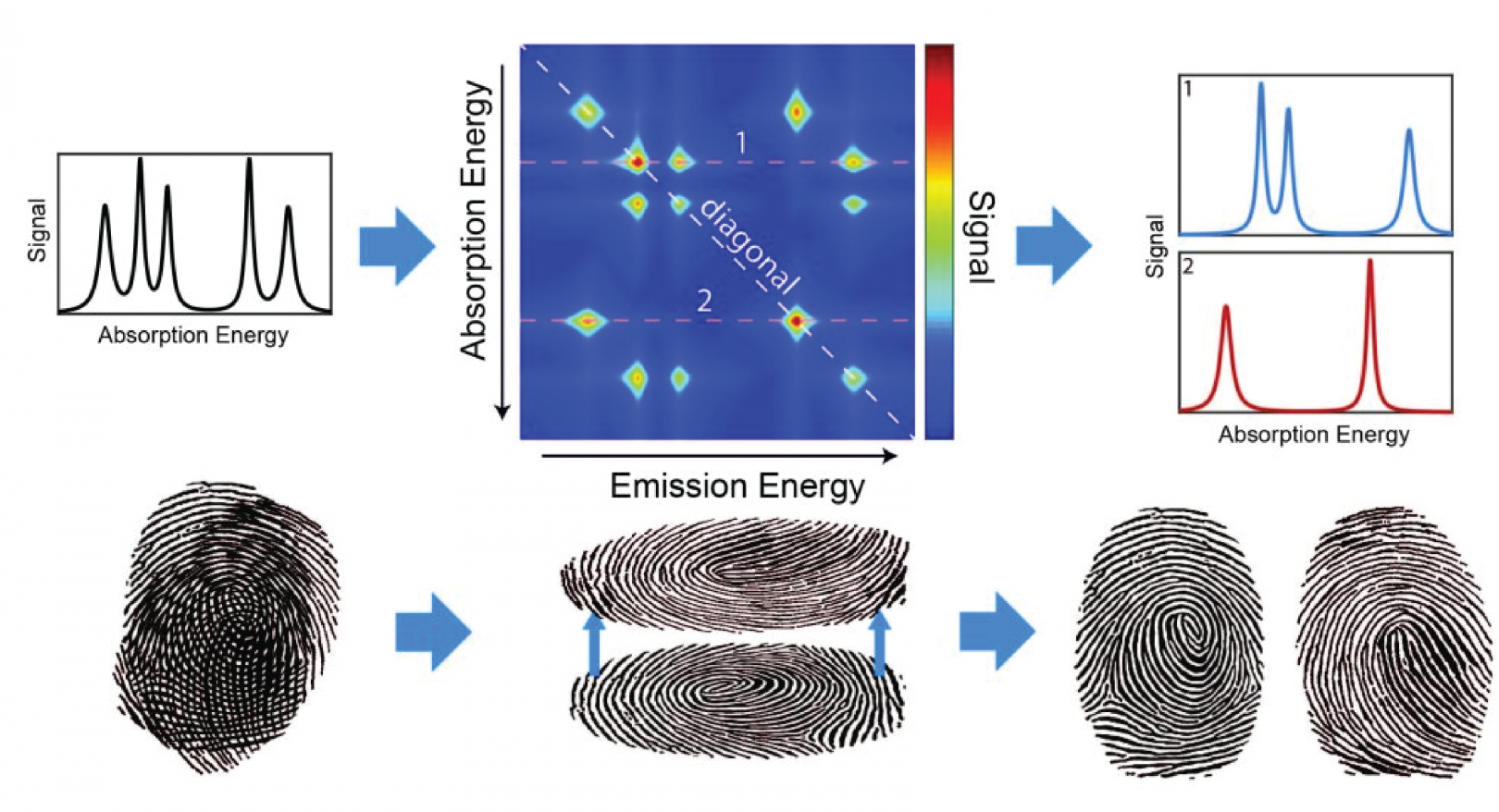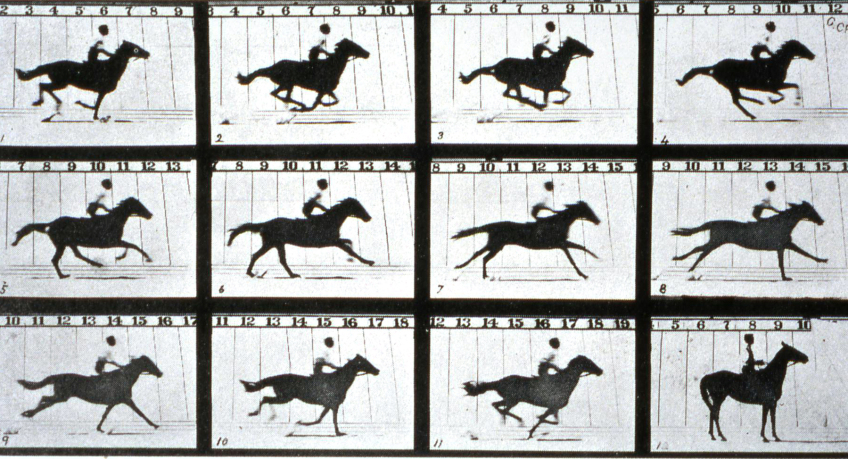Application notes
Advanced Imaging Microscopy
As our use and understanding of microscopic objects become more complex, so too must the imaging techniques we use to measure them.
Silicon Carbide
Scaled semiconductor widely used for power electronics has inspection needs that ultrafast imaging can solve.
Semiconductor Inspection
Defects in compound semiconductor create a new set of challenges for the tools used to inspect those wafers.
Multidimensional coherent spectroscopy
Multi-dimensional coherent spectroscopy (MDCS) is a powerful series of techniques used to correlate optical excitation and emission energies. The techniques are particularly well suited for inhomogeneous materials.
Transient Absorption Spectroscopy
Transient absorption, sometimes called pump-probe, is one of the simpler forms of ultrafast spectroscopy used for measuring dynamics down to attoseconds.
Technical notes
Whenever ultrafast laser pulses are used, careful treatment of temporal and spatial chirp is necessary. Spatial chirp in collinear setups is caused by a wavelength-dependent diffraction angle of the acousto-optic modulators (AOMs). Additionally, the reference laser does not leave the AOM collinear with the pulsed laser. Fortunately, there is an easy solution to this: Double-passing the AOMs.

The double passing geometry illustrated on the left uses a cat’s eye retroflector configuration with a lens placed a focal length away from the AOM, and a mirror places a focal length away from the lens. This configuration ensures that all laser beams are reflected through the AOM the exact same way they left it – with any spatial and angular dispersion canceled.

b. Collinear geometry can get down to the diffraction limit.
Collinear techniques are much more versatile than non-collinear techniques, though non-collinear techniques are the standard in nonlinear spectroscopy. Collinear techniques can go wherever you can shine a laser beam. One capability of collinear techniques is stand-off detection, which enables spectroscopy outside the lab or in a large vacuum chamber. The other major capability of a collinear technique is that it can be coupled with a microscope. That is to say; it is only possible to access the diffraction limit with collinear techniques, shown in the adjacent figure.
There are three significant features of a diffraction-limited spot:
- You can achieve high intensities with low-power light sources (so consider ditching that amplifier)
- You can select regions of highly inhomogeneous samples. Many samples are small, and even the large ones often have short-range structures.
- You can use the small spot to measure the transport and diffusion of excitons, electrons, phonons, etc., by scanning the positions of your excitation beams.
Collinear resonant spectroscopic techniques all have a significant technical challenge: distinguishing the signal from everything else.
The solution, heterodyne detection of frequency-shifted beams, is a coherent technique (though interestingly, it does not require any of the exciting light sources to necessarily be lasers).
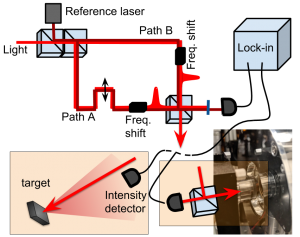
This heterodyne technique can be applied to spectrally-resolved transient absorption (pump-probe) spectroscopy.
It can also be applied to the set of phase-resolved third-order nonlinear spectroscopies called MDCS.
Steve Cundiff’s group has played a significant role in advancing the collinear MDCS techniques. The group developed the first frequency-comb based MDCS. Before that, the group demonstrated heterodyne-detected collinear spectroscopy and photocurrent-detected collinear spectroscopy. These are the technologies that motivated the creation of MONSTR Sense.
Lock-in detection is often the method-of-choice for filtering out weak (nonlinear) signals against a large background. However, conventional lock-in detection encounters issues for rapid imaging – i.e., short time-constants. MONSTR Sense has developed a patent-pending approach to lock-in detection.
 The figure on the left shows an image of a transition metal dichalcogenide monolayer taken with a conventional lock-in and with the MONSTR Sense lock-in for similar pixel dwell times. The stark difference between the performance stems from the MONSTR Sense lock-in’s ability to efficiently suppress extraneous modulations in multi-pulse experiments: In multi-pulse experiments, the signal (at the signal specific tag-frequency) will be accompanied by numerous additional modulations from linear interference of the employed pulses and other nonlinear signals.
The figure on the left shows an image of a transition metal dichalcogenide monolayer taken with a conventional lock-in and with the MONSTR Sense lock-in for similar pixel dwell times. The stark difference between the performance stems from the MONSTR Sense lock-in’s ability to efficiently suppress extraneous modulations in multi-pulse experiments: In multi-pulse experiments, the signal (at the signal specific tag-frequency) will be accompanied by numerous additional modulations from linear interference of the employed pulses and other nonlinear signals.
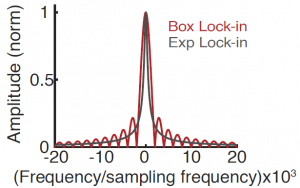
As time constants become shorter for rapid imaging, the conventional (“Exp lock-in”) does not efficiently suppress those extraneous modulations because it transfer function in the frequency-domain, shown in the figure on the right, broadens. Naturally, especially when these modulations are significantly stronger than the actual signal, the extraneous modulations break through and contaminate the image, as can be seen in the comparison of the two lock-ins above, With the MONSTR Sense lock-in (“Box lock-in”), these modulations can be placed in the notches of the transfer function, yielding superior suppression by orders of magnitude.
If you want to learn more about this technology and how it helps fuel nonlinear imaging applications, we recommend the following paper we have published on our lock-in amplifier.

